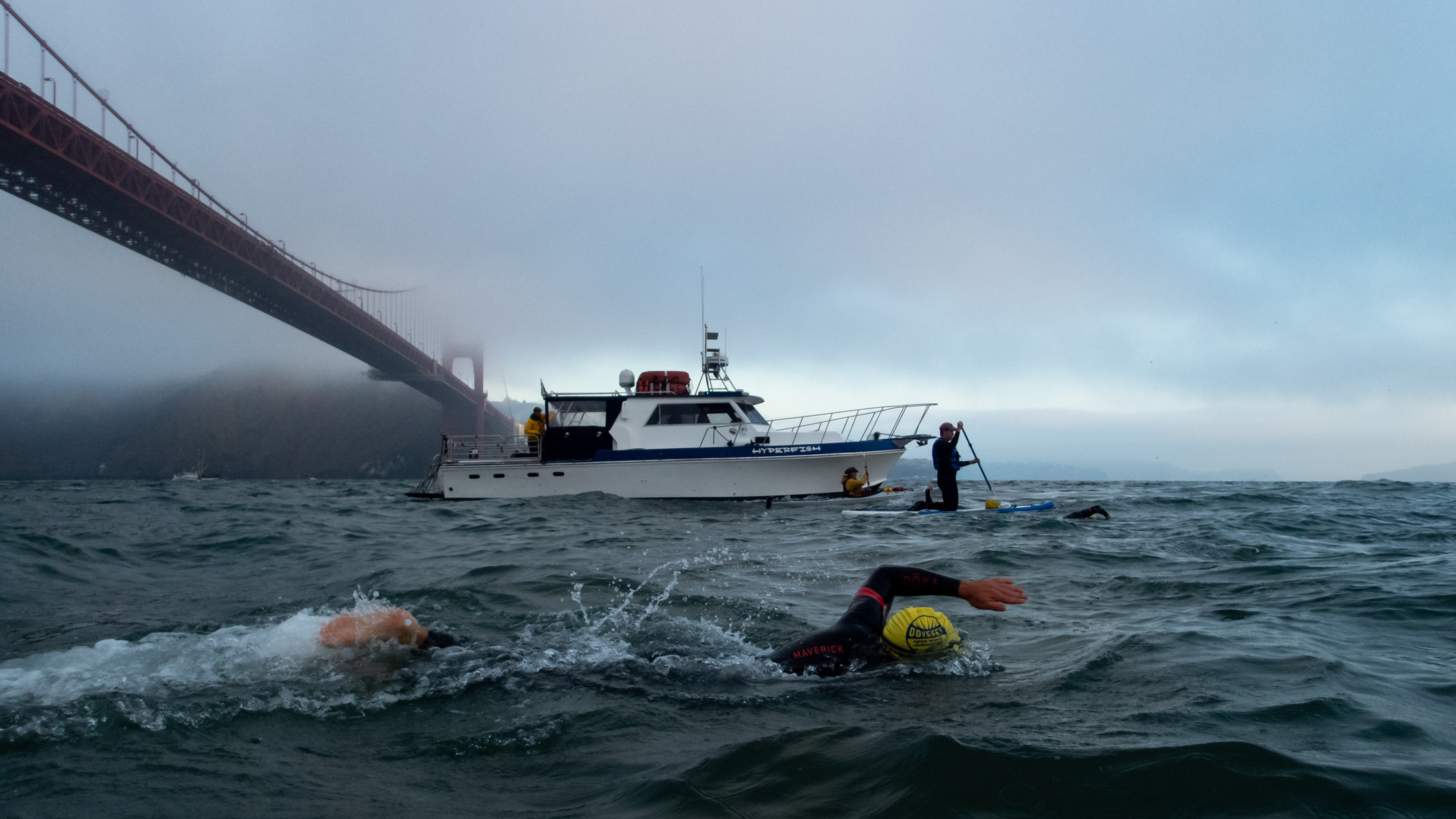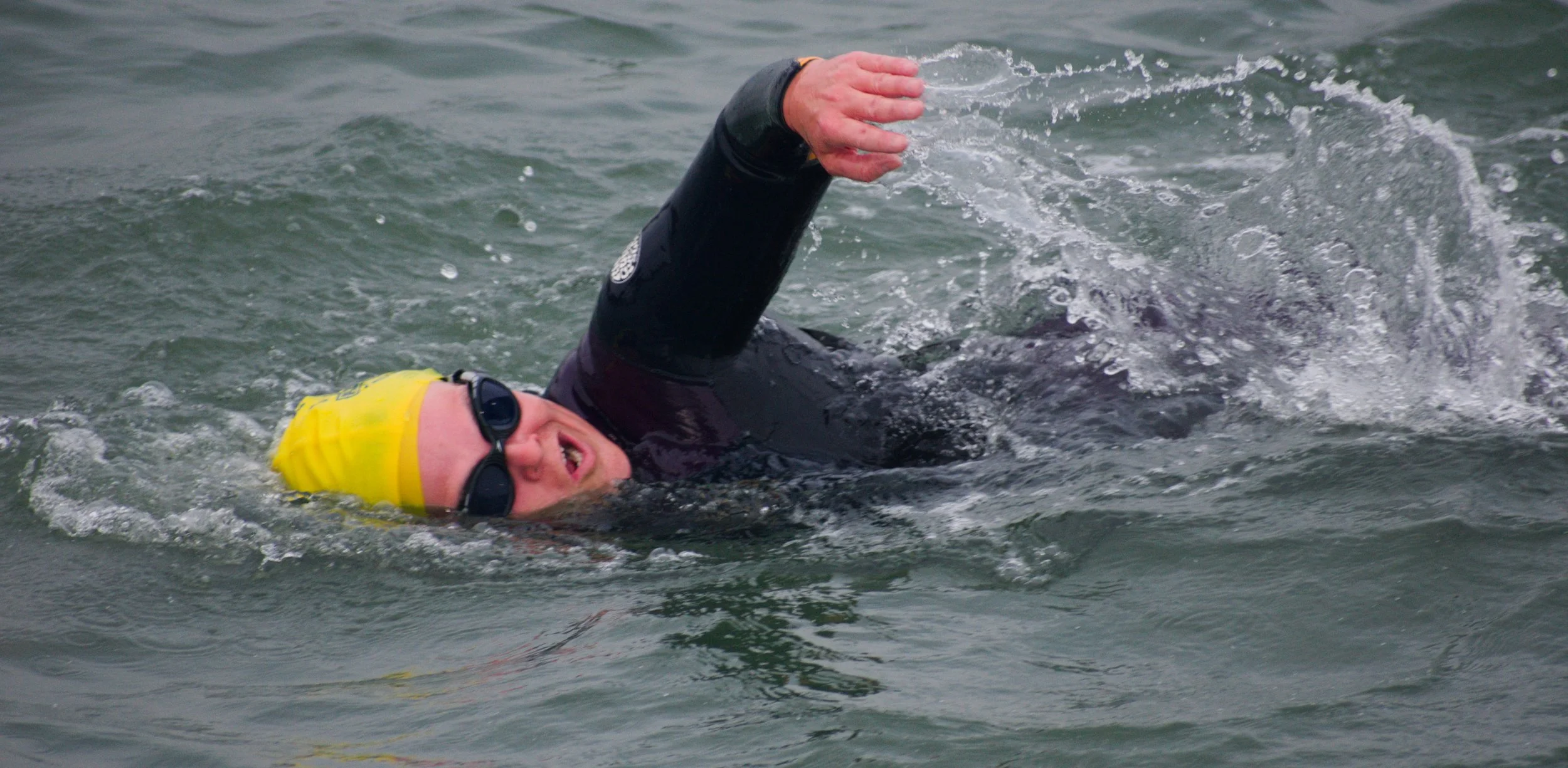Open Water Swimming
Everyone has a different reason for swimming. What’s yours?
Are you looking to get in a great workout, improve your time for an upcoming race, or just seeking adventure? Whatever your reason for swimming, we support you! Odyssey Open Water Swimming is your guide to adventure in the San Francisco Bay.
Odyssey was born out of love for open water swimming, which is an activity that has been growing for years. When the pandemic forced many athletes and swimmers out of pools and into open water where they could safely space themselves from others, open water swimming once again saw an increase in growth.
In 2018, over 27.5 million Americans went for a swim. While there isn’t data on what percentage of these swims took place in the open water, we believe that millions of these swims took place in an open body of water. Learn more about our favorite pastime -- open water swimming, below.
What is Open Water Swimming?
Open water swimming is an activity in which participants swim outdoors in a body of water, including rivers, ponds, lakes, bays, and oceans. The activity includes additional variables that make it more challenging than swimming indoors, including “chop” and current. There are no walls or lane lines, and the weather can create harsh conditions for swimming.
As mentioned above, open water swimming has increased in popularity in recent years from the U.S. to UK, with over 170 events taking place in open water in Britain and hundreds in America each year.
Popular open water swims around the world include:
In 2008, open water swimming became an official sport in the Olympics after receiving the Olympic designation. In the 2020 Olympics, two open water marathons of 10km were scheduled to take place (one for men and one for women).
Is Open Water Swimming Dangerous?
Open water swimming can be challenging even for experienced swimmers. Like any athletic activity, from skiing to running, there are risks involved in open water swimming. Consider the following variables when swimming in the open water:
Wildlife
Distance
Temperature
Tide
Waves
Safety support available on-site
Experience and comfort in the open water
Open water swimming should never be done alone. The complex nature of swimming in open water makes swimming difficult and sometimes dangerous without a fellow swimmer or safety support on hand to help if needed.
Odyssey Open Water Swimming has safety support at every swim. Our support staff monitors the conditions, plans the course, and follows swimmers on kayaks or paddleboards. They can pull swimmers out of the water if necessary.
To lower your risk when swimming in open water, know your surroundings, always have support, and be confident and competent in the water. Before trying to swim in the open water, make sure that you can swim comfortably for long distances in a pool.
Read about the top fears of open water swimmers here!
To help new swimmers get started, Odyssey Open Water Swimming offers weekly Berkeley swims. Berkeley swims are open to swimmers of all experience and skill levels. Learn more about Odyssey Berkeley swims here.
What Do You Wear for Open Water Swimming?
For open water swimming, consider wearing the following:
Swimsuit or wetsuit (wetsuit recommended for cold water temps)
Goggles
Swim caps (bright colors are recommended)
Earplugs
Snacks and/or fluid (for long swims)
Some swimmers may also choose to wear foot fins or “flippers.” While not allowed in triathlons or races, fins can help novice swimmers in the open water.
How Long Does it Take to Swim a Mile in the Open Water?
While top swimmers can swim a mile in a pool in around 15 minutes, an experienced swimmer can swim a mile in the open water in approximately 25-30 minutes according to triathlon coach Megan Tobin. “Experience will determine speed or efficiency,” Megan says.
Novice yet capable swimmers swim a mile in the open water in 30-45 minutes.
The conditions of the body of water you are swimming in and your level of experience will play a significant role in the time it takes to swim a mile. Under harsh conditions, a swim can take nearly twice as long as in calm waters.
Do You Need a Wetsuit for Open Water Swimming?
Wetsuits are not required. Many swimmers do choose to wear a wetsuit, especially during winter months where the water temperature drops down to the 50s and 60s. For comparison, pools used for competitive swimming are supposed to be between 77 and 82 degrees.
You may not have to purchase a brand new swimsuit in order to wear one while swimming in the open water. Odyssey Open Water Swimming recommends renting wetsuits at Sports Basement for $25 a week or $50 a month. Sports Basement rents Blue Seventy and 2XU suits, which are designed for open water swimming. Surfing wetsuits also work for open water swimming.
Tip: If wearing a wetsuit, we recommend using Glide or a similar lubricant to prevent chafing.
Your First Open Water Swim
Are you ready to give open water swimming a try? Click here to learn what you should know before your first open water swim with Odyssey Open Water Swimming. We recommend joining Odyssey for our weekly Berkeley swims, which are open to swimmers of all skill levels. Swimmers can choose the length of their route, and commonly swim from .5-2 miles.
Open Water Swimming as an Exercise
Open water swimming is one of the best workouts available, but it’s not for the faint of heart. A 20-minute swim in the pool can burn 250 calories. Due to the difficulty of swimming in the open water, you can expect to burn additional calories and spend more time in the water when swimming the same distance in the open opposed to in a pool. However, as mentioned above, this is an exercise you should not do alone, making it difficult to access unless you have an experienced swimming “buddy” or local open water swimming group (like Odyssey Open Water Swimming!).
Open Water Swimming Resources
There is a growing collection of open water swimming resources around the web, from ocean swimming techniques to sea swimming breathing technique guides.
Here are some helpful articles, blog posts, guides, and websites:
Open Water Swimming Articles and Blog Posts
The Best Open Water Swimming Training Tips: The OWS Community Answers (Odyssey Open Water Swimming)
What to Know Before Trying Open Water Swimming (Odyssey Open Water Swimming)
Understanding Alcatraz Currents for Open Water Swimming (Odyssey Open Water Swimming)
What is the Greatest Benefit of Open Water Swimming? The Community Answers (Odyssey Open Water Swimming)
Open Water Swimming Guides
Open Water Swimming (Book)
Open Water Swimming Websites
San Francisco/Berkeley-based private open water swimming group that hosts public swims in Berkeley and large events, including the Odyssey Alcatraz swim.
A UK directory of supervised and commercially operated open water venues.
Open water swimming home for England. Find news, notes, tips, guides, and more.
The World Open Water Swimming Association.
Open water swimming news, highlights, features, and more.
Open Water Swimming Videos
9 Open Water Swimming Tips (Global Triathlon Network)
Understanding Currents: Alcatraz Swim (Odyssey Open Water Swimming)
Open Water Swimming Records
To date, the longest recorded ocean swim (“continuous, unassisted, current neutral swim along a single-segment natural route in an ocean, sea, or bay”) was completed by Chloe McCardel in 2014. The swim took 41 hours and 21 minutes and covered 77.3 miles (124.4km).
Find the full list of long-distance swimming records here on longswims.com.




